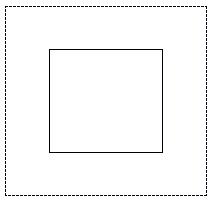
| Visual Basic (Declaration) | |
|---|---|
Public Class LocalHistogramEqualizeCommand Inherits Leadtools.ImageProcessing.RasterCommand Implements IRasterCommand | |
| Visual Basic (Usage) |  Copy Code Copy Code |
|---|---|
Dim instance As LocalHistogramEqualizeCommand | |
| C# | |
|---|---|
public class LocalHistogramEqualizeCommand : Leadtools.ImageProcessing.RasterCommand, IRasterCommand | |
| C++/CLI | |
|---|---|
public ref class LocalHistogramEqualizeCommand : public Leadtools.ImageProcessing.RasterCommand, IRasterCommand | |
Run the LocalHistogramEqualizeCommand on an image.
| Visual Basic |  Copy Code Copy Code |
|---|---|
Public Sub LocalHistogramEqualizeCommandExample() Dim codecs As New RasterCodecs() codecs.ThrowExceptionsOnInvalidImages = True Dim leadImage As RasterImage = codecs.Load(Path.Combine(LEAD_VARS.ImagesDir, "Master.jpg")) ' Prepare the command Dim command As LocalHistogramEqualizeCommand = New LocalHistogramEqualizeCommand command.Width = 15 command.Height = 15 command.WidthExtension = 100 command.HeightExtension = 100 command.Smooth = 0 command.Type = HistogramEqualizeType.Yuv ' Local Histogram equalize the image. command.Run(leadImage) codecs.Save(leadImage, Path.Combine(LEAD_VARS.ImagesDir, "Result.jpg"), RasterImageFormat.Jpeg, 24) End Sub Public NotInheritable Class LEAD_VARS Public Const ImagesDir As String = "C:\Users\Public\Documents\LEADTOOLS Images" End Class | |
| C# |  Copy Code Copy Code |
|---|---|
public void LocalHistogramEqualizeCommandExample() { // Load an image RasterCodecs codecs = new RasterCodecs(); codecs.ThrowExceptionsOnInvalidImages = true; RasterImage image = codecs.Load(Path.Combine(LEAD_VARS.ImagesDir, "Master.jpg")); // Prepare the command LocalHistogramEqualizeCommand command = new LocalHistogramEqualizeCommand(); command.Width = 15; command.Height = 15; command.WidthExtension = 100; command.HeightExtension = 100; command.Smooth = 0; command.Type = HistogramEqualizeType.Yuv; // Local Histogram equalize the image. command.Run(image); codecs.Save(image, Path.Combine(LEAD_VARS.ImagesDir, "Result.jpg"), RasterImageFormat.Jpeg, 24); } static class LEAD_VARS { public const string ImagesDir = @"C:\Users\Public\Documents\LEADTOOLS Images"; } | |
| SilverlightCSharp |  Copy Code Copy Code |
|---|---|
public void LocalHistogramEqualizeCommandExample(RasterImage image, Stream outStream) { // Prepare the command LocalHistogramEqualizeCommand command = new LocalHistogramEqualizeCommand(); command.Width = 15; command.Height = 15; command.WidthExtension = 100; command.HeightExtension = 100; command.Smooth = 0; command.Type = HistogramEqualizeType.Yuv; // Local Histogram equalize the image. command.Run(image); // Save result image RasterCodecs codecs = new RasterCodecs(); codecs.Save(image, outStream, RasterImageFormat.Jpeg, 24); image.Dispose(); } | |
| SilverlightVB |  Copy Code Copy Code |
|---|---|
Public Sub LocalHistogramEqualizeCommandExample(ByVal image As RasterImage, ByVal outStream As Stream) ' Prepare the command Dim command As LocalHistogramEqualizeCommand = New LocalHistogramEqualizeCommand() command.Width = 15 command.Height = 15 command.WidthExtension = 100 command.HeightExtension = 100 command.Smooth = 0 command.Type = HistogramEqualizeType.Yuv ' Local Histogram equalize the image. command.Run(image) ' Save result image Dim codecs As RasterCodecs = New RasterCodecs() codecs.Save(image, outStream, RasterImageFormat.Jpeg, 24) image.Dispose() End Sub | |
- This class applies the histogram equalizer locally on the image. The image is divided into local rectangles of dimension (Width, Height). The number of pixels inside each local rectangle are linearized according the histogram calculated for an extended rectangle around each local rectangle. The extended rectangles are of dimension:
((Width+2 * WidthExtension) , ( Height + 2 * HeightExtension)).
For an example, see the following drawing:

A rectangle and its associated extension, where the histogram is calculated. - Use this class to bring out details in an image that has portions that are too dark or too bright. An example of this is a picture taken with a flashlight in a dark room. In such a picture, the subject receives good light while the background is very dark. The application of the local histogram brings out details, but creates a blocky artifact. Use Smooth to reduce the blockiness of the result.
- This class supports 12 and 16-bit grayscale and 48 and 64-bit color images. Support for 12 and 16-bit grayscale and 48 and 64-bit color images is available only in the Document/Medical toolkits.
- This command does not support 32-bit grayscale images.
System.Object
Leadtools.ImageProcessing.RasterCommand
Leadtools.ImageProcessing.Color.LocalHistogramEqualizeCommand
Target Platforms: Silverlight, Windows XP, Windows Server 2003 family, Windows Server 2008 family, Windows Vista, Windows 7, MAC OS/X (Intel Only)
Reference
LocalHistogramEqualizeCommand MembersLeadtools.ImageProcessing.Color Namespace
Changing Brightness and Contrast
ChangeIntensityCommand Class
GammaCorrectCommand Class
ChangeContrastCommand Class
HistogramContrastCommand Class
StretchIntensityCommand Class
RemapIntensityCommand Class
InvertCommand Class
ChangeHueCommand Class
ChangeSaturationCommand Class
Leadtools.ImageProcessing.FillCommand
HistogramCommand Class
Leadtools.ImageProcessing.Core.WindowLevelCommand
AutoColorLevelCommand Class
ColorLevelCommand Class
Leadtools.ImageProcessing.Core.CorrelationListCommand
GrayScaleToDuotoneCommand Class
GrayScaleToMultitoneCommand Class
Leadtools.ImageProcessing.Core.HolePunchRemoveCommand
SelectiveColorCommand Class
Leadtools.ImageProcessing.Effects.SkeletonCommand

